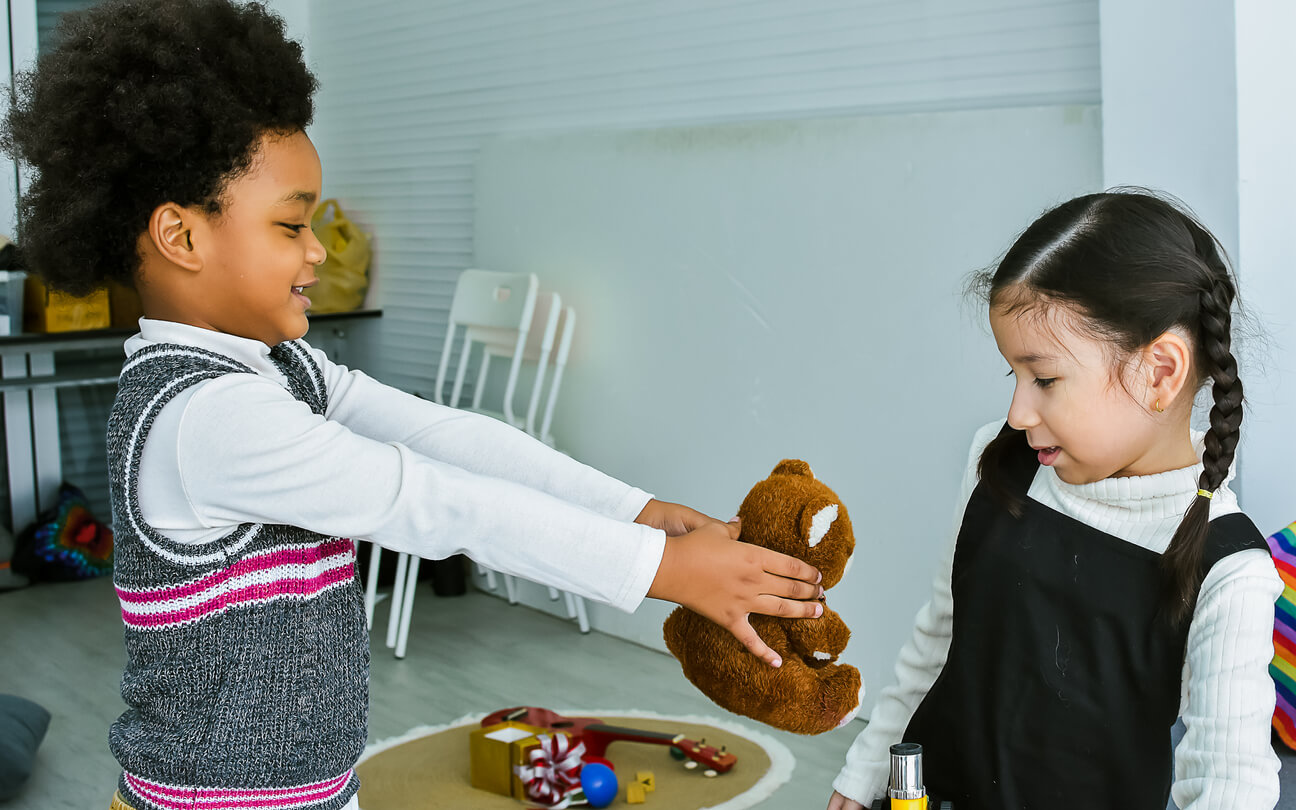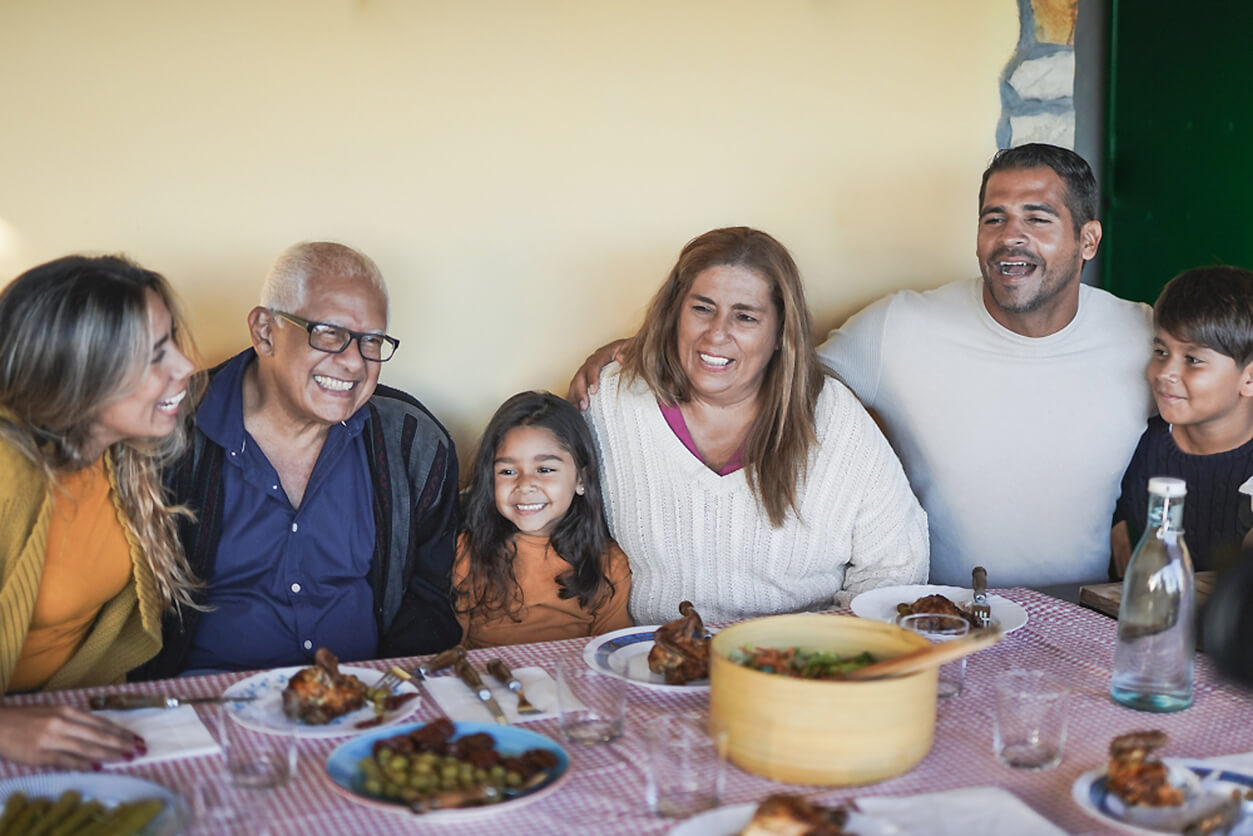How to Instill Gratitude at Home


Written and verified by the psychologist Mara Amor López
One of the most esteemed values to teach children is gratitude. Children should learn to give thanks, which will bring them well-being and satisfaction. As well as the rest of the values they’re taught, it’s important to start by setting an example and having actions of gratitude toward other people. Grateful parents will raise considerate children. But how do we instill gratitude?
Gratitude is one of the values that generates the most positive emotions in other people. Being thankful is good for us, as it’s good for both body and mind. For children to integrate gratitude into their behavioral repertoire, it’s important that they see it at home. This quality should be worked on over the long term so that it becomes part of their character and personality. In the following article, we’ll tell you how to instill gratitude in your children at home.
Gratitude can be taught from 18 months
From an early age, children should be educated to be grateful, as it’s the correct way to act in society. If we teach a little one from 18 months to 3 years old to say please and thank you when someone shows them a good deed, they’ll surely develop the habit. However, at these ages, they don’t yet understand the meaning of gratitude, so they simply repeat it because they’ve learned it.
From the age of 4, children are more independent and begin to better understand their emotions and those of others. Throughout these ages, they may refuse to say thank you or ask for a favor. However, not saying thank you isn’t a bad thing, especially if they’ve never been taught to say it.
Parents are the ones who, from an early age, should make them internalize it, because it’s one of the most enriching values that exist and that can bring them the most benefits.

How to instill gratitude at home
As we’ve said, for a child to be grateful, it must be taught from home. It’s important that from the time children are able to understand, we explain to them what gratitude and being grateful mean. If we do it correctly, without punishments or reproaches, the child will learn to be grateful.
Gratitude in the daily life of a family
We can encourage gratitude and put it into practice in our family’s daily life. Here are some tips:
- Be grateful: The example of parents is essential to teach this value to children. That’s why it’s important to use the word “thank you” frequently. For example, to say thank you for the delicious dinner we ate, to the person who prepared it, and to the person who was kind to us.
- Talk about the best parts of our day: We have to find a moment every day to give thanks for everything that deserves it and that has happened to us during the day. If we think about all the good things that have happened to us, we’ll improve our sense of gratitude.
- Promote solidarity: Get involved and involve children in charitable causes, such as collecting food, clothes, or toys that we don’t need to share with those in need.
- Value gifts: When someone gives us a gift, it’s because they care about us. Therefore, we should thank them and show them we’re grateful for what they’ve done for us.
- Simplicity: Teach children how important it is to be grateful for what they have instead of being angry for what they lack. For this, we can use the saying, “The richest man is not he who has the most but he who needs the least.”
- Be grateful for the gestures and actions of everyday life: Many times, we focus on the negative without realizing all that we have to be grateful for. For example, appreciating the dawn of a new day, being able to go out with friends to the park, or having a family that loves us.
Be a good example
Let’s not forget that children learn by imitation, so they follow their parents’ example. If children often hear us say thank you in different situations and with different people, they’ll understand how important it is.
Help others
Another thing we can do to instill gratitude in our children is to help the most disadvantaged people, especially if we’re fortunate enough to live a comfortable life. It’s important that children learn to be humble and grateful for what they have that others can’t have.
Therefore, we can encourage them to donate toys they no longer play with or clothes they no longer wear. This will make them see that they have a lot to be thankful for in their lives, give more value to things, and become generous people.

Giving thanks every night for something that happened during the day
An exercise that we can do every night as a family is to give thanks for the good things that have happened to us that day. For example, this can be done at dinner time or any other time we’re together. We can ask our children what moment of their day they’d like to be thankful for and also share about the good things that have happened during our own day.
Being good people
Gratitude is also important to work on our children’s empathy and the ability to put themselves in other people’s shoes. When they learn to be grateful, they also know that their actions are going to be valued, so they’ll strive for good results. Therefore, it’s important to foster in our children, from a young age, the value of gratitude, which will help them to be good people.
“We must always find the time to thank the people who make a difference in our lives”
-John F. Kennedy–
One of the most esteemed values to teach children is gratitude. Children should learn to give thanks, which will bring them well-being and satisfaction. As well as the rest of the values they’re taught, it’s important to start by setting an example and having actions of gratitude toward other people. Grateful parents will raise considerate children. But how do we instill gratitude?
Gratitude is one of the values that generates the most positive emotions in other people. Being thankful is good for us, as it’s good for both body and mind. For children to integrate gratitude into their behavioral repertoire, it’s important that they see it at home. This quality should be worked on over the long term so that it becomes part of their character and personality. In the following article, we’ll tell you how to instill gratitude in your children at home.
Gratitude can be taught from 18 months
From an early age, children should be educated to be grateful, as it’s the correct way to act in society. If we teach a little one from 18 months to 3 years old to say please and thank you when someone shows them a good deed, they’ll surely develop the habit. However, at these ages, they don’t yet understand the meaning of gratitude, so they simply repeat it because they’ve learned it.
From the age of 4, children are more independent and begin to better understand their emotions and those of others. Throughout these ages, they may refuse to say thank you or ask for a favor. However, not saying thank you isn’t a bad thing, especially if they’ve never been taught to say it.
Parents are the ones who, from an early age, should make them internalize it, because it’s one of the most enriching values that exist and that can bring them the most benefits.

How to instill gratitude at home
As we’ve said, for a child to be grateful, it must be taught from home. It’s important that from the time children are able to understand, we explain to them what gratitude and being grateful mean. If we do it correctly, without punishments or reproaches, the child will learn to be grateful.
Gratitude in the daily life of a family
We can encourage gratitude and put it into practice in our family’s daily life. Here are some tips:
- Be grateful: The example of parents is essential to teach this value to children. That’s why it’s important to use the word “thank you” frequently. For example, to say thank you for the delicious dinner we ate, to the person who prepared it, and to the person who was kind to us.
- Talk about the best parts of our day: We have to find a moment every day to give thanks for everything that deserves it and that has happened to us during the day. If we think about all the good things that have happened to us, we’ll improve our sense of gratitude.
- Promote solidarity: Get involved and involve children in charitable causes, such as collecting food, clothes, or toys that we don’t need to share with those in need.
- Value gifts: When someone gives us a gift, it’s because they care about us. Therefore, we should thank them and show them we’re grateful for what they’ve done for us.
- Simplicity: Teach children how important it is to be grateful for what they have instead of being angry for what they lack. For this, we can use the saying, “The richest man is not he who has the most but he who needs the least.”
- Be grateful for the gestures and actions of everyday life: Many times, we focus on the negative without realizing all that we have to be grateful for. For example, appreciating the dawn of a new day, being able to go out with friends to the park, or having a family that loves us.
Be a good example
Let’s not forget that children learn by imitation, so they follow their parents’ example. If children often hear us say thank you in different situations and with different people, they’ll understand how important it is.
Help others
Another thing we can do to instill gratitude in our children is to help the most disadvantaged people, especially if we’re fortunate enough to live a comfortable life. It’s important that children learn to be humble and grateful for what they have that others can’t have.
Therefore, we can encourage them to donate toys they no longer play with or clothes they no longer wear. This will make them see that they have a lot to be thankful for in their lives, give more value to things, and become generous people.

Giving thanks every night for something that happened during the day
An exercise that we can do every night as a family is to give thanks for the good things that have happened to us that day. For example, this can be done at dinner time or any other time we’re together. We can ask our children what moment of their day they’d like to be thankful for and also share about the good things that have happened during our own day.
Being good people
Gratitude is also important to work on our children’s empathy and the ability to put themselves in other people’s shoes. When they learn to be grateful, they also know that their actions are going to be valued, so they’ll strive for good results. Therefore, it’s important to foster in our children, from a young age, the value of gratitude, which will help them to be good people.
“We must always find the time to thank the people who make a difference in our lives”
-John F. Kennedy–
All cited sources were thoroughly reviewed by our team to ensure their quality, reliability, currency, and validity. The bibliography of this article was considered reliable and of academic or scientific accuracy.
- Guerrero Mateus, C. A. (2015). La virtud de la gratitud en niños y niñas de grado 3° de educación básica primaria.
-
Freitas, L. B. D. L., Silveira, P. G., & Pieta, M. A. M. (2009). El sentimiento de gratitud en niños de 5 a 12 años. Psicologia em Estudo, 14(2), 243-250.
-
Regner, E. R. (2009). Compasión y gratitud, emociones empáticas que elicitan las conductas prosociales.
-
Czar, A., Kapelmayer, M., Kelmanowicz, V., Esteves, S., & Lozada, M. (2019). Intervenciones basadas en gratitud y optimismo reducen las interacciones sociales negativas en niños.
This text is provided for informational purposes only and does not replace consultation with a professional. If in doubt, consult your specialist.








